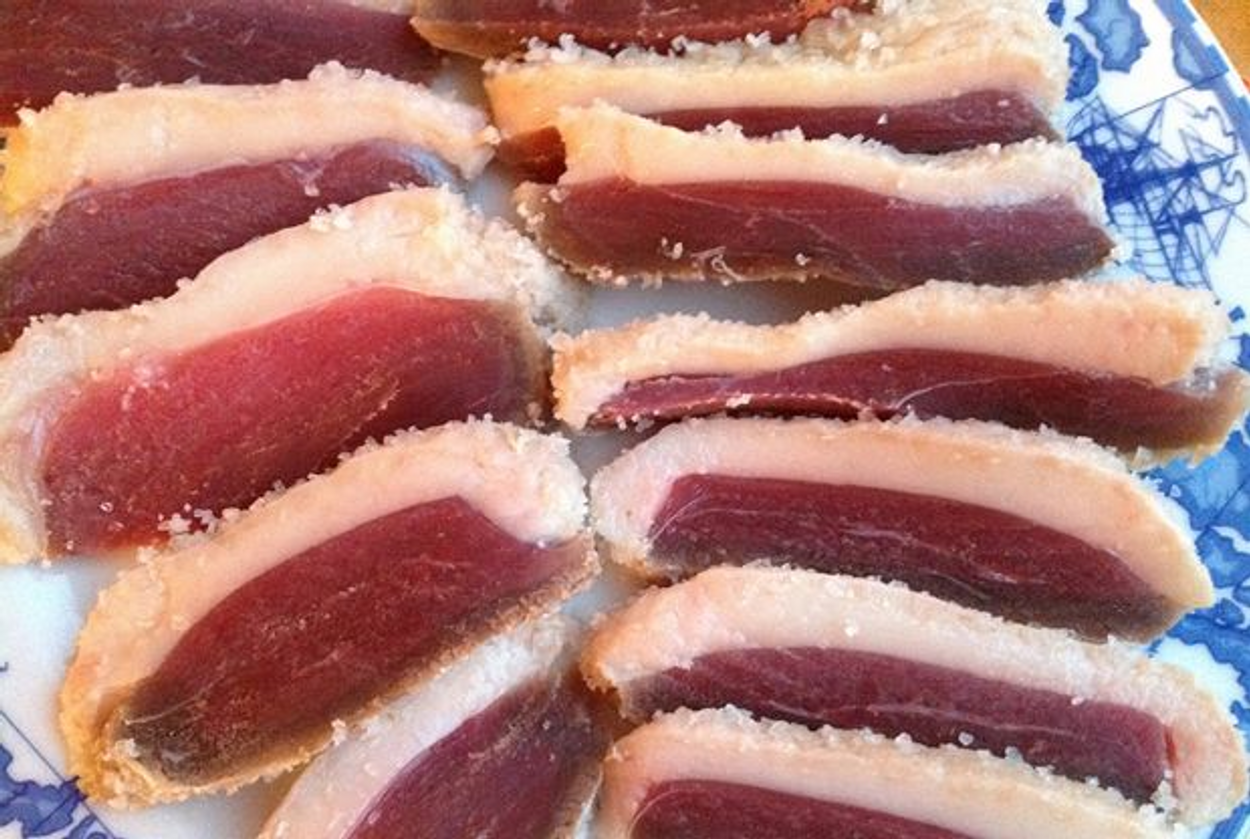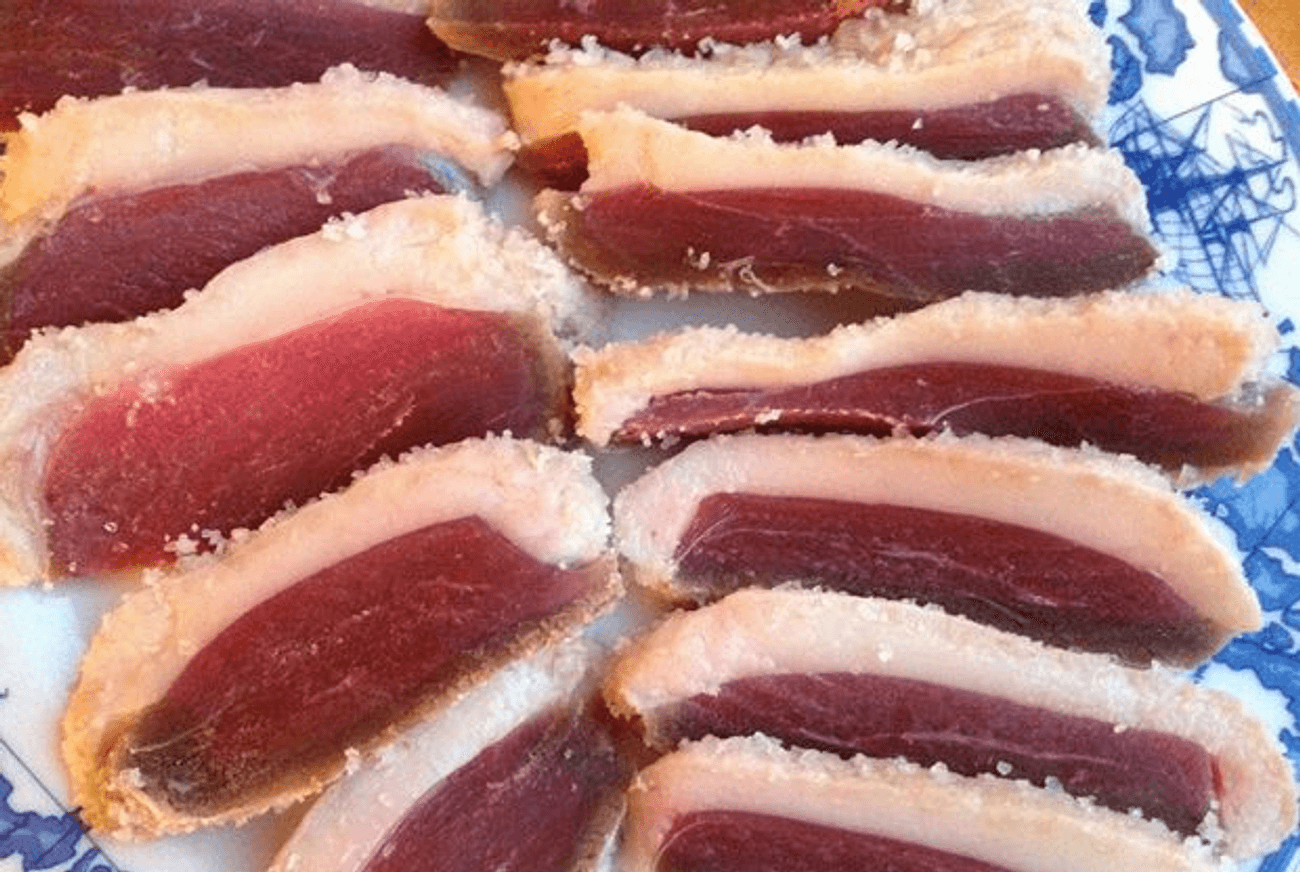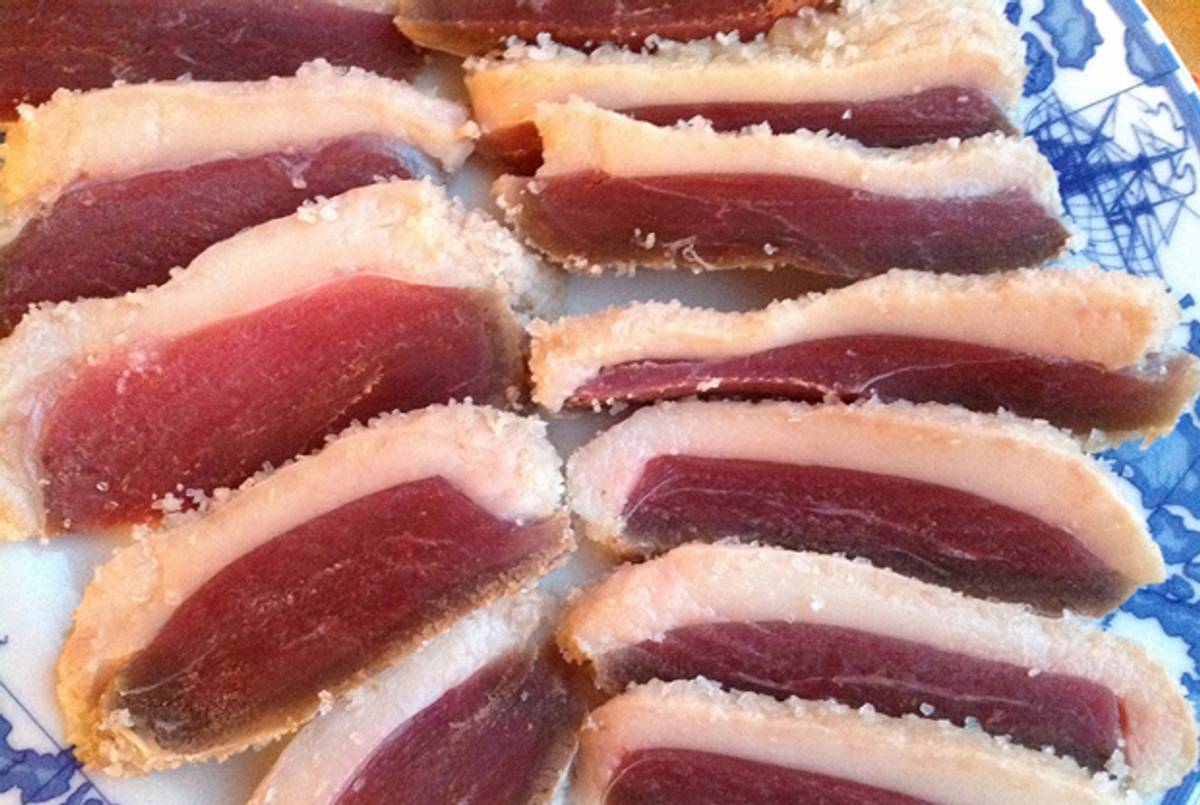Try Some Jewish Ham This Thanksgiving
The dish was a staple for Sephardic Jews during the Spanish Inquisition





Searching for a new twist on the traditional Thanksgiving buffet? Look no further than the Spanish Inquisition.
A new online publication, The Converso Cookbook, offers unique dishes based on the recipes of 14th- and 15th-century Jews who were persecuted by Spanish authorities. One of these recipes, Jewish Ham—or cecina de ansarón or ansarón cecinado—is a perfect Thanksgiving alternative. The “ham” is actually salt-cured duck or goose; when sliced, the final product looks rather similar to salted pork.
The Converso Cookbook is the work of Ana Gomez-Bravo, a professor of Spanish and Jewish Studies at the University of Washington. She’s involved with the university’s Sephardic Studies Program, featured in a Tablet article this summer about Seattle’s Ladino revival.
A native of Madrid, Gomez-Bravo specializes in medieval and early modern Spanish literature. She has long been fascinated by the culture of converso Jews—those who were forced to convert to Christianity during the Inquisition period. Gomez-Bravo realized that food practices could serve as a rich source of information about medieval Sephardic identity, and began to hunt for textual evidence in both Jewish sources and Inquisitorial records.
Then, she started cooking.
The result is an intriguing online gallery that is part cookbook, part photo essay, and part history lesson. Recipes for Jewish Ham: Cured Goose, Almodrote: Spicy Eggplant, and Adafina: Sabbath Stew can be found alongside blog posts explaining the story behind each recipe, based on Gomez-Bravo’s archival research.
To her surprise, Gomez-Bravo found that attempting to replicate these dishes in a modern kitchen—and locating ingredients as similar as possible to those described in her medieval sources—shed new light on the complex (and age-old) connection between food and Jewish identity. It’s also a useful tool for familiarizing modern Jewish audiences with a dark period in Jewish history.
“Food is a good way to present hard topics and periods that are generally perceived as difficult to understand,” Gomez-Bravo explained. “I also hope to help retrieve an important part of Jewish heritage and to help Jews know their own history.” (Her current book project examines how the Inquisitors used the food practices of Jews and Muslims as the basis of racial profiling.)
American Jews have long embraced Thanksgiving as a time to celebrate their integration into American society. Like other secular national holidays, Thanksgiving offers a chance to synthesize a variety of culinary traditions. So why not use kosher poultry to recreate a 15th-century Sephardic Jewish dish that itself was akin to Spanish cured pork? This Thanksgiving, try some Jewish Ham and revel in the complexity of flavors—and of history.
Ingredients:
2 duck or goose breast halves (If you can’t find fresh duck or goose or don’t want to debone a bird yourself, you can easily find frozen duck breasts in many supermarkets.)
1 pound kosher salt
black pepper (optional)
bay leaves (optional)
thyme (optional)
juniper berries (optional)
The simplest way to prepare duck or goose ham is to just bury the breasts in kosher salt. It is common to pat cracked pepper on the breasts before tying them together with the fat side out, but you can skip this step. If you have a smoker, you can smoke the meat after it has dried or, for a more traditional effect, you can hang it by your chimney the next time you light a fire!
If you are using salt that has been out of the package for a while or you live in a damp climate, you can dry the salt before use by stirring it in a cast iron pot on a medium-high fire for five to ten minutes or until it looks dry. Be careful when handling it after you have removed it from the heat because it will be scorching hot.
After the salt has cooled down to room temperature, lay a bed of it in a glass bowl. Lay the meat on the salt and cover it with another layer.
If your bowl is not large enough to hold both breast halves in one layer, you can place one breast half on top of the other, first making sure that you have spread a thick layer of salt between them.
It is important that the meat be covered with salt on all sides and that the layers are thick, as the meat will be releasing its juices as it becomes cured.
Place the bowl with the duck or goose meat in the salt in the refrigerator for a week.
To consume, slice thinly and serve as an appetizer or put a piece in your adafina!
Once you become comfortable with this recipe, you can try adding some garlic and dry spices like black pepper, bay leaf, thyme, and juniper berries alongside the salt.
Hannah Pressman has a doctorate in Hebrew literature and is co-editor of Choosing Yiddish: New Frontiers of Language and Culture. Her writing has appeared in Lilith, the Forward, eSefarad.com, and MyJewishLearning.com. She lives in Seattle, where she is affiliate faculty for the UW Stroum Center for Jewish Studies.
Hannah S. Pressman is currently at work on Galante’s Daughter, a memoir connecting her Sephardic family history to explorations of American Jewish identity.